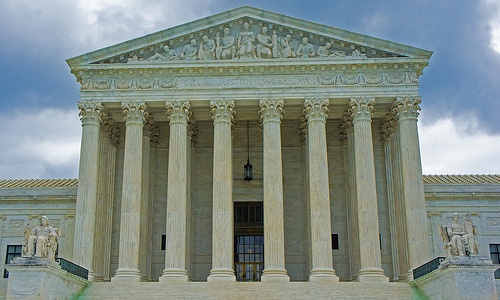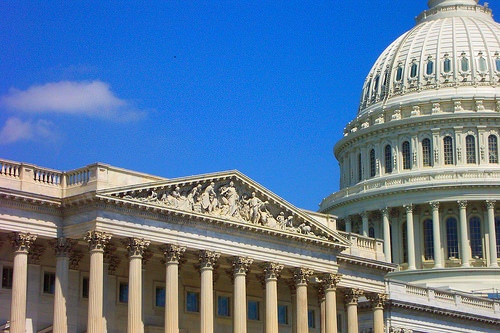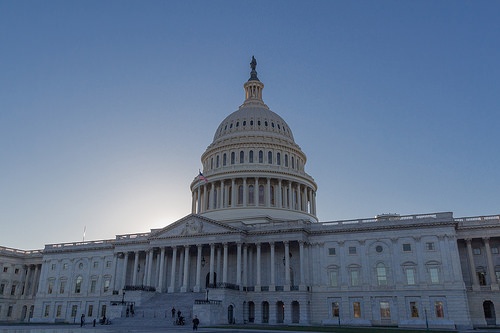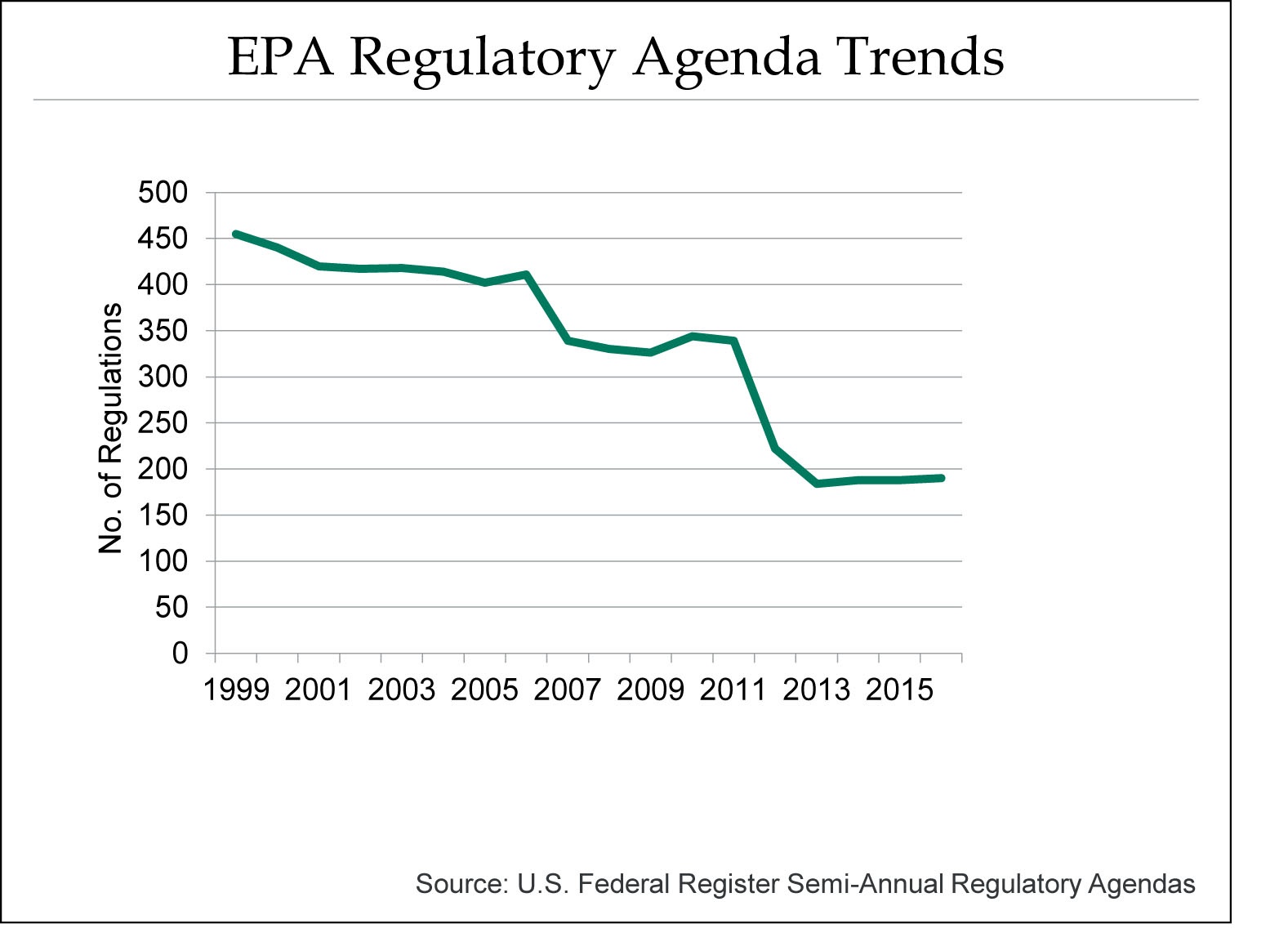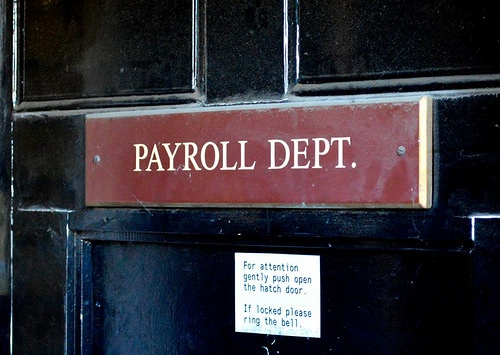In Re Hornby Residences Ltd. (2017 BCSECCOM 17), the British Columbia Securities Commission had to determine whether a real estate development corporation and its principal had violated the BC Securities Act s. 57(b) prohibition against fraud in connection with the issuance of a security when the funds invested were used to pay the principal and other corporations controlled by the same principal, Brendan James Schouw. Schouw was a real estate developer and the sole director of Hornby, and of Grace Residences Ltd. and Homer Residences Ltd. Schouw was also connected with Drake Residences Ltd., although the Commission was not provided with information about its directors and officers.
Read MoreAudit, Compliance and Risk Blog
BC Securities Commission Addresses Allegations of Fraud Against Real Estate Developer
Posted by Ron Davis on Thu, May 04, 2017
Tags: Corporate Governance, Business & Legal, SEC, Canadian, directors & officers
Supreme Court Nominee’s Record Provides Insight into Views on Internet and Social Media Law
Posted by Michael Lambert on Thu, Mar 23, 2017
Legislatures and lower courts have traditionally been responsible for developing Internet law in the United States, but recently the U.S. Supreme Court has been asserting a more active role in shaping Internet law jurisprudence. In 2015, the Court considered whether a Facebook post constituted a “true threat” in Elonis v United States, and this summer, the Court will determine the constitutionality of a prohibition on former sex offenders using social media in Packingham v. North Carolina. Packingham, like other cases heard by the high court so far this term, will be resolved by eight justices.
This week, the potential ninth justice—Judge Neil Gorsuch—begins confirmation hearings before the U.S. Senate Judiciary Committee. As the Court takes a deeper look at cases concerning Internet and social media law, the seat vacated after the death of Justice Antonin Scalia could be instrumental in determining the future of Internet and social media law.
Gorsuch has the expected pedigree of a Supreme Court nominee: he is an appellate judge on the U.S. Court of Appeals for the Tenth Circuit, a former deputy associate attorney general with the U.S. Department of Justice, a former clerk for Justices Byron White and Anthony Kennedy, and a graduate of Harvard Law School. His views of Internet and social media law, however, are less certain, although his record on the Tenth Circuit bench provides a glimpse into where he may stand on Internet law issues.
In U.S. v. Ackerman, Gorsuch lived up to his reputation as a constitutional originalist, turning to the framers in determining that the Fourth Amendment protects emails from searches. Gorsuch wrote that the “warrantless opening and examination of private correspondence…seems pretty clearly to qualify as exactly the type of trespass to chattels that the framers sought to prevent when they adopted the Fourth Amendment.” Gorsuch added that “a more obvious analogy from principle to new technology is hard to imagine.”
In a second privacy case, U.S. v. Christie, Gorsuch concluded that although a warrant to search a computer for evidence relating to a crime was broad, it satisfied the Fourth Amendment’s particularity requirement.
In Mink v. Knox, a district attorney pursued criminal libel charges against a publisher of an online journal. Gorsuch wrote a concurring opinion, agreeing with the majority that the speech was protected as parody but cautioning the majority on the extent to which parodies may be safeguarded. Gorsuch opined that “the Supreme Court has yet to address how far the First Amendment goes in protecting parody. And reasonable minds can and do differ about the soundness of a rule that precludes private persons from recovering for reputational or emotional damage caused by parody about issues of private concern.”
Gorsuch also wrote a concurring opinion in Direct Marketing Association v. Brohl, upholding a Colorado law requiring online retailers without brick-and-mortar locations in the state to notify consumers of sales tax liability and report the information to the Colorado Department of Revenue.
In the copyright context, Gorsuch authored an opinion in Meshwerks, Inc. v. Toyota Motor Sales USA, Inc., determining that Meshwerks’ digital models of Toyota’s vehicles copying Toyota’s designs were not entitled to copyright protection. “While fully appreciating that digital media present new frontiers for copyrightable creative expression, in this particular case the uncontested facts reveal that Meshwerks’ models owe their designs and origins to Toyota and deliberately do not include anything original of their own; accordingly, we hold that Meshwerks’ models are not protected by copyright and affirm,” Gorsuch wrote.
In Doe v. Shurtleff, a case analogous to Packingham, Gorsuch joined a panel opinion in upholding the constitutionality of a Utah statute requiring convicted sex offenders to register all online usernames.
With the U.S. Supreme Court taking a more engaged role in Internet and social media law, the vote of a 49-year-old Justice Neil Gorsuch, if confirmed, could prove critical in shaping Internet law for years to come.
Specialty Technical Publishers (STP) recently published an entirely new chapter, available as a separate guide, on U.S. Social Media Law in its publication Internet Law: The Complete Guide, and provides a variety of single-law and multi-law services, intended to facilitate clients’ understanding of and compliance with requirements. These include:
Tags: Business & Legal, Internet
Tags: Business & Legal, Environmental risks, Environmental, EPA
Congressional Review Act Versus the Obama Administration’s Late Regulations
Posted by Jon Elliott on Tue, Mar 07, 2017
One mechanism seeing its first use in 16 years is the Congressional Review Act, which gives Congress the power to pass a joint resolution “disapproving” – repealing – a federal agency rulemaking. Each resolution requires Presidential approval, so as a practical matter it only works when a new president agrees with Congress to repeal one of his predecessor’s regulations. In 2001, President George W. Bush agreed with Congressional disapproval of an ergonomics standard adopted by the Occupational Safety and Health Administration (OSHA) during President Clinton’s governance in 2000. In contrast, President Obama vetoed five such resolutions while he was still president, blocking Congressional attempts to disapprove rules his own administration had adopted because Congressional leaders were unable to muster 2/3 supermajorities in both houses to override his vetoes. As of the end of February, three such resolutions have been passed and signed into law by President Trump.
What is the Congressional Review Act?
The Act was passed early in 1996, toward the end of President Clinton’s first term, and after the Republicans had gained majorities in both house of Congress from Democrats. Congressional leaders wanted the opportunity to review regulations and reject those they opposed, and were concerned that the Democratic Administration might enact so-called “midnight regulations” before the 1996 election. Accordingly:-
Federal agencies must submit a copy of each new rule to Congress, along with a concise general statement relating to the rule, including whether it is a major rule (i.e., likely to affect the national economy by more than $100 million annually); and its effective date.
-
Congress then has a total of 60 days in which both houses are in session, to review the rule and adopt a resolution of disapproval. Because a recess by either house stops the clock, 60 legislative days may cover many weeks – in 2016 any rule adopted on or after June 13 turned out to have fewer than 60 days remaining before the end of the 2015-2016 Congress.
-
When a rule is adopted with fewer than 60 days remaining, the 60-day clock restarts when the next Congress convenes, and is again measured based on days both houses are in session. During 2017, the House and Senate calendars presently indicate that the reconvened 2017-2018 Congress will have until May 17, 2017 to consider an Obama Administration rule adopted on or after June 13, 2016.
Which Resolutions Have Already Been Enacted During 2017?
As of the end of February, President Trump has signed legislation encompassing three resolutions of disapproval, vacating the following:-
Securities and Exchange Commission (SEC) Rule 13q-1, which would have required each “resource extraction issuer” to include in its annual reports information about any payment made by the issuer (or a subsidiary or entity under its control) to the U.S. federal government or any foreign government for the purpose of the commercial development of oil, natural gas, or minerals. This Rule implemented a statutory requirement enacted in 2010 by the Dodd-Frank Act.
-
Department of Interior (DOI) “Stream Protection Rule” (actually extensive rules in 30 CFR part 700 et seq.), which would have established extensive new and modified regulatory requirements intended to “protect water supplies, surface water and groundwater quality, streams, fish, wildlife, and related environmental values from the adverse impacts of surface coal mining operations.” This rule was adopted pursuant to the Surface Mining Control and Reclamation Act of 1977.
-
Social Security Administration (SSA) rules for providing the Attorney General with information about SSA beneficiaries who may be denied the right to buy and own guns, based on their mental health issues. These rules were adopted pursuant to the National Instant Criminal Background Check System (NICS) Improvement Amendments Act of 2007.
What Might Happen After a Rule is Disapproved?
A resolution of disapproval voids the targeted rule, sending the issue back to the adopting agency for more action. The Act prohibits the agency from reissuing the disapproved rule “in substantially the same form” – although few would expect an agency staffed by President Trump’s appointees to readopt a rule first approved by President Obama’s appointees. The Act provides no timeline for subsequent action, so SEC, DOI, and SSA (and other agencies that may experience similar disapprovals in the coming months) can move as quickly or slowly as their present priorities dictate.Congressional Review Act disapprovals have no direct effect on the underlying statute that provided authority and direction to the agency that adopted the rule. That requires separate legislation, approved by both houses of Congress and signed by the President.
Self-Assessment Checklist
Is the organization subject to a federal regulation adopted on or after June 13, 2016?-
SEC Resource Extraction Issuer reporting rule
-
DOI Stream Protection Rule
-
SSA NICS rule
-
Other rule
Where Can I Go For More Information?
-
Congressional Research Service “Insight” report (calculating 6/13/16 as cutoff for rules reviewable in 2017)
-
SEC’s Resource Extraction Issuer Rule
-
Rule (published in7/29/16 Federal Register)
-
Public Law 115-4, disapproving (signed 2/14/17)
-
-
DOI’s Stream Protection Rule
-
Rule (published in 12/20/16 Federal Register)
-
Public Law 115-5, disapproving (signed 2/14/17)
-
-
SSA’s NICS (eligibility for guns) rule
-
Rule (published in 12/19/16 Federal Register)
-
Public Law 115-8, disapproving (signed 2/28/17)
-
Specialty Technical Publishers (STP) provides a variety of single-law and multi-law services, intended to facilitate clients’ understanding of and compliance with requirements. These include:
About the Author
Jon Elliott is President of Touchstone Environmental and has been a major contributor to STP’s product range for over 25 years. He was involved in developing 13 existing products, including Environmental Compliance: A Simplified National Guide and The Complete Guide to Environmental Law.
Mr. Elliott has a diverse educational background. In addition to his Juris Doctor (University of California, Boalt Hall School of Law, 1981), he holds a Master of Public Policy (Goldman School of Public Policy [GSPP], UC Berkeley, 1980), and a Bachelor of Science in Mechanical Engineering (Princeton University, 1977).
Mr. Elliott is active in professional and community organizations. In addition, he is a past chairman of the Board of Directors of the GSPP Alumni Association, and past member of the Executive Committee of the State Bar of California's Environmental Law Section (including past chair of its Legislative Committee).
You may contact Mr. Elliott directly at: tei@ix.netcom.com
photo credit: Ania Mendrek Capitol Hill via photopin (license)
Read MoreWhile the Internet creates great opportunities for commerce and for sharing information around the world, these blessings can be curses to the holders of trade secrets. The Internet poses a challenge for trade secret holders because it is an open network and it provides for immediate and widespread dissemination of information.
Read MoreTags: Business & Legal, Internet
Appeal Court Rejects Intention to Resign Reasoning in Directors’ Tax Liability
Posted by Ron Davis on Tue, Feb 07, 2017
The Federal Court of Appeal granted the Crown’s appeal from a Tax Court decision excusing two directors from liability for unremitted income tax deductions because there was evidence of their subjective intention to resign as directors (Gariepy v. Canada, 2016 FCA 236). Donna Elizabeth Gariepy and Sally Anne Chriss were directors of 1056922 Ontario Ltd. (“105”), a company whose affairs and business was managed by their respective spouses. The spouses had previously operated another company that had become insolvent and owed significant amounts to the Canada Revenue Agency. The spouses were aware that they could be liable as directors of the previous company for a two year period and prevailed on Gariepy and Chriss to become 105’s directors for those two years, despite their lack of involvement in the previous company and their reluctance to act as directors.
Read MoreTags: Business & Legal, Canadian, directors, directors & officers
The Internet continues to develop and evolve at lightning-fast speed, with new sites and platforms bursting into prominence as others lose their popularity and fade away. Meanwhile, the law, which is not known for its rapid acceptance of new ideas and technology, struggles to keep up, and so do those who must keep up with both the technological and legal developments.
Read MoreTags: Business & Legal, Employer Best Practices, Employee Rights, Internet
Buzz, buzz. Ring, ring. Your eyes are instantly open as the sharp sounds of your smartphone alarm ring in your ears. After reaching over to quell the noise, you jump out of bed, eager to begin your first day as director of marketing for Tech, Inc. Your workday begins with HR orientation. Without much explanation, your hiring manager drops reams of paperwork on your lap. One of the documents is titled “Tech, Inc. Social Media Policy,” while another is a form seeking your personal social media account usernames and passwords. After orientation, you are escorted to your new office, which, to your chagrin, is a small cubicle instead of a plush corner suite. You are assigned your first task: to launch an advertising campaign comparing Tech to rival company, Widget, Inc., along with a promotion in which customers pick three numbers for $2 for a chance to win Tech’s latest gadget. You proudly squeeze promotional information, a slight jab at Widget, and a photo of the prize in a 140-character tweet. After a long first day of work, you arrive at home and post to Facebook: “First day of work. :-) HR sucks. Cubicle is tiny. :-) Thinking about complaining. #newjob #TechInc #funemploymentover #realworld.”
Read MoreU.S. Environmental Regulatory Trends at the Close of the Obama Administration
Posted by Larry Cahill on Thu, Jan 19, 2017
“The care of human life and happiness, and not their destruction, is the first and only object of good government.”
Tags: Business & Legal, Health & Safety, Environmental risks, Environmental, EPA
Director Who Decided Not To Be Involved In Business, Still Liable For Employees’ Unpaid Wages
Posted by Ron Davis on Tue, Jul 19, 2016
Mensa Williams was listed as a director in the incorporation documents for Ambrosia Elite Corp., a company run by his brother, Admin. Ambrosia was incorporated in 2007, but did not actively conduct its retail clothing business until 2008. Ambrosia became insolvent in 2014, leaving its employees with unpaid wage claims. The unpaid wage claims were pursued under Ontario’s Employment Standards Act, 2000 (ESA), and when those claims were unsatisfied, an order to pay was issued to Ambrosia’s directors including Mensa Williams.
Read MoreTags: Business & Legal, Employer Best Practices, Employee Rights, directors, directors & officers


